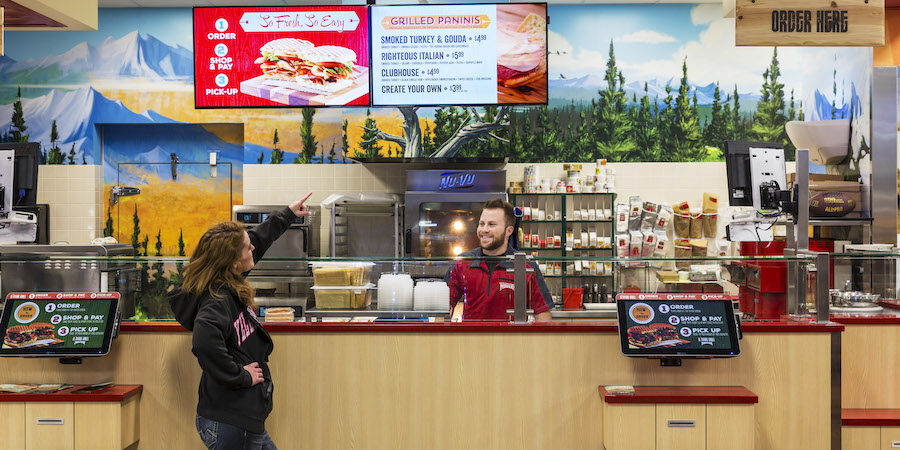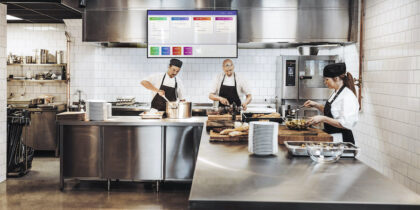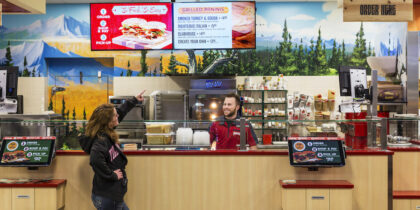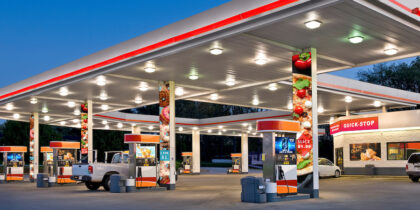
Order Terminals & Samsung Kiosk
We’ve covered the Samsung kiosks for Grubbrr and for Clover. Great unit (though we wish accessibility & Windows OS options). This article is by Samsung and they do a good “typical” benefits overview for self order terminals. Leads off with an emphasis on labor shortages. Bingo. But another aspect of these order terminals unmentioned is how they are now filtering down to small and medium business. The Clover Kiosk for example can be ordered online for under $3000 and received in less than 6 weeks. Payback typically for a single restaurant is 16 weeks. And they naturally come with a labor shortage and oftentimes a language barrier for operators for which English is their second language.
I think the ROI deserved mention since that is deciding factor for many to buy it. No mention of using the nice display for digital messaging either. In the article they interview Zac Rustad and we recommend visiting their online “get your Clover kiosk” now at https://orderingkiosk.net, they may even give you a discount if you mention us. Stop by NRF and 1602 next week and you can get a demo of the Samsung kiosk in its Clover interaction by Zac himself. Our NRF portal shows several Samsung products at NRF. We do have the Samsung Order Terminal Kiosk KM24A brochure available.
Other recommended content includes: PDF – 2022 Drive Thru Study Report, PDF – 7-Eleven Digital Signs, PDF Report – 2022 State of Restaurant Industry, Order Kiosks for Customers & Digital Messaging, Digital Menu Board Technical Considerations – Indoor & Outdoor, and Interactive Self-Order ROI – BurgerFi Case Study
From Samsung Insights and
Labor shortages and the supply chain crisis have dealt a double whammy to quick-service restaurants (QSRs) and convenience stores, but the issues are surmountable for operators willing to look out of the box.
Self-service kiosks are a prime off-the-shelf solution and provide multiple benefits, like improved shopping efficiency. They’re easy to integrate into small retail spaces without disrupting the customer experience, and operators can make quick menu updates as items become unavailable. Self-service kiosks such as Samsung Kiosk are reliable, unlikely to fail and result in downtime. They also free up staff to focus on other tasks.
What’s more, consumer acceptance of this technology is high. As the trend toward contactless shopping has grown, self-service payment kiosks have quickly become a normal part of everyday life in retail stores.
A solution to shortages
Self-serve kiosks can compensate for labor shortages by putting customers in control of their order, allowing them to browse menu items, select what they’d like and pay in their own time, without the need for a sales assistant.
Staff shortages are also reported to have reduced operating hours and speed of service at QSRs and c-stores. Such delays can hamper sales; 85 percent of consumers report that they’ll leave a business when the line is too long.
Increase basket size in the c-store

cstore
WHITE PAPER
Get your free guide to digitizing convenience stores to boost sales using digital signage. Download Now
The Restaurant Association’s November survey found that, in recent months, 96 percent of operators experienced supply delays or shortages of key food or beverage items, while 8 in 10 have faced similar problems with their equipment or service items. As a result, the majority of QSR and restaurants operators are revisiting their menus and updating their associated processes.
Benefits of restaurant and QSR kiosks
Line busting
Self-service kiosks improve the customer experience by providing intuitive all-in-one ordering and payment systems, which enable shoppers to jump the line. There’s no more waiting for a sales attendant to become available, wait for answers to basic questions or wait for help with checkout. The kiosk puts customers in control of their own orders. They can browse, get product information, order and pay, with multiple payment options.
Menu management
With more flexibile technology, restaurant operators can make instant updates to their menu as it changes. If an item is suddenly out of stock, restaurants can adjust the menu immediately, improving customer satisfaction.
Customers using kiosks will have access to the most current, up-to-date menus. This removes the possibility of disappointment that comes when someone selects a product that’s no longer available.
Upselling and promoting premium products
Kiosks also make it easier to upsell. Unlike store employees, kiosks never tire of asking customers if they would like something else. Besides suggesting add-ons, kiosks can promote limited-time offers and new menu additions. They can even encourage people to join the store’s loyalty program, helping increase business revenue and profits.
Getting it right first time
Kiosks help QSRs and c-stores deliver a consistent customer experience by largely removing human error from the equation. As customers place orders, self-service helps ensure accuracy, confirming their final selections before payment. Many customers say modern menu boards that confirm their orders are a top reason for revisiting a particular venue or business.
Easy integration
Kiosks are compact self-serve solutions that can be easily integrated into QSRs and c-stores without disruption. They offer multiple modes of installation — standing, wall-mounted and countertop — so they’re well suited to the majority of store configurations and layouts. Kiosks can be managed remotely, allowing QSRs and c-stores to troubleshoot and resolve any issues from afar, anywhere they have any internet connection.
Meet Samsung Kiosk
Samsung Kiosk is a sleek, all-in-one payment and ordering solution aimed at convenience retailers and QSRs. The versatile, compact solution offers multiple installation options: counter, stand or wall. Its eye-catching design draws attention on its own, while the neutral grey-white tones blend in naturally in any store environment.
With a highly responsive 24-inch touchscreen, the kiosk also includes a speaker, terminal and printer — all in a single plug-and-play unit. And thanks to the internal payment module, there’s no need for peripheral devices. Easy to install and activate, the kiosk offers transactional security, remote access and mobile device management (MDM) tools so IT and operations managers can easily monitor multiple kiosks across a network.
Customer safety is also top of mind. Shatterproof film prevents the screen’s glass from dispersing in an accident, and an antimicrobial coating helps inhibit bacteria growth for continuous use.
Kiosks lend a hand
Self-serve solutions like Samsung Kiosk provide a near-immediate solution for labor and supply chain challenges in the food and beverage industry. Always-on, self-serve kiosks enhance the customer experience by allowing people to skip the line and take charge of their own orders.
By improving overall efficiency and transaction value, kiosks also free up staff to focus on more value-added tasks. It’s a win-win.
Make your customer experience as compelling as possible with more restaurant and in-store display solutions for your restaurant or store to— as you drive customer traffic, boost order size and streamline back-of-house processes. And get your free guide to digitizing convenience stores to boost sales using digital signage.


